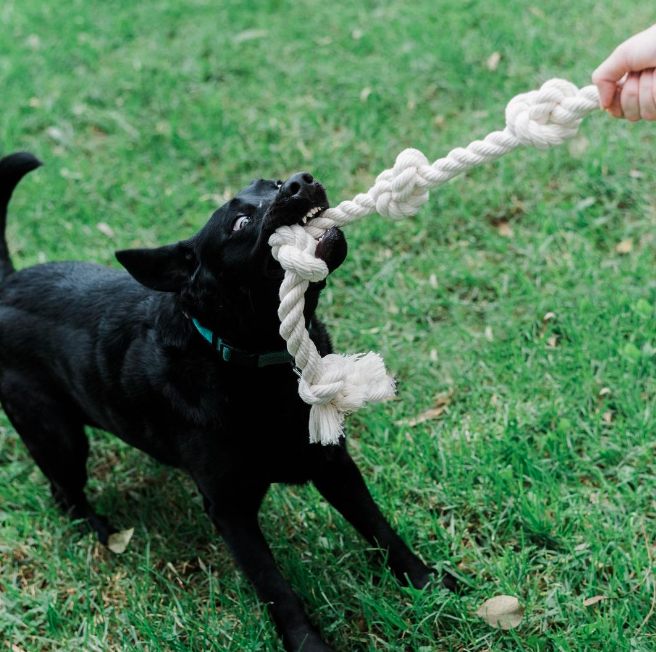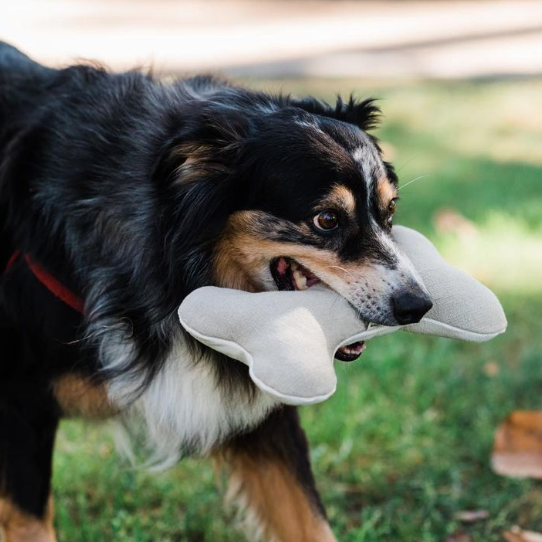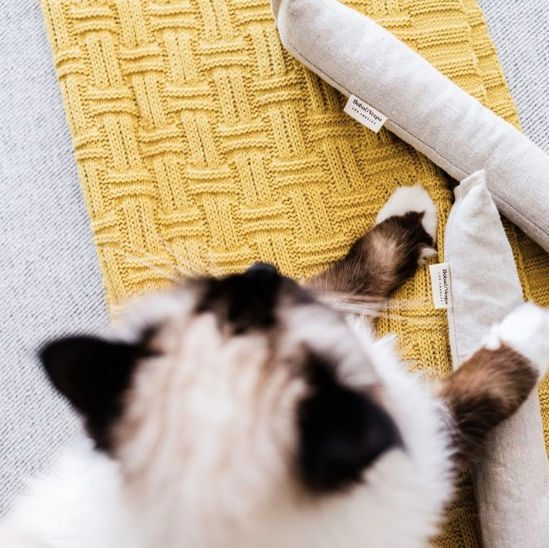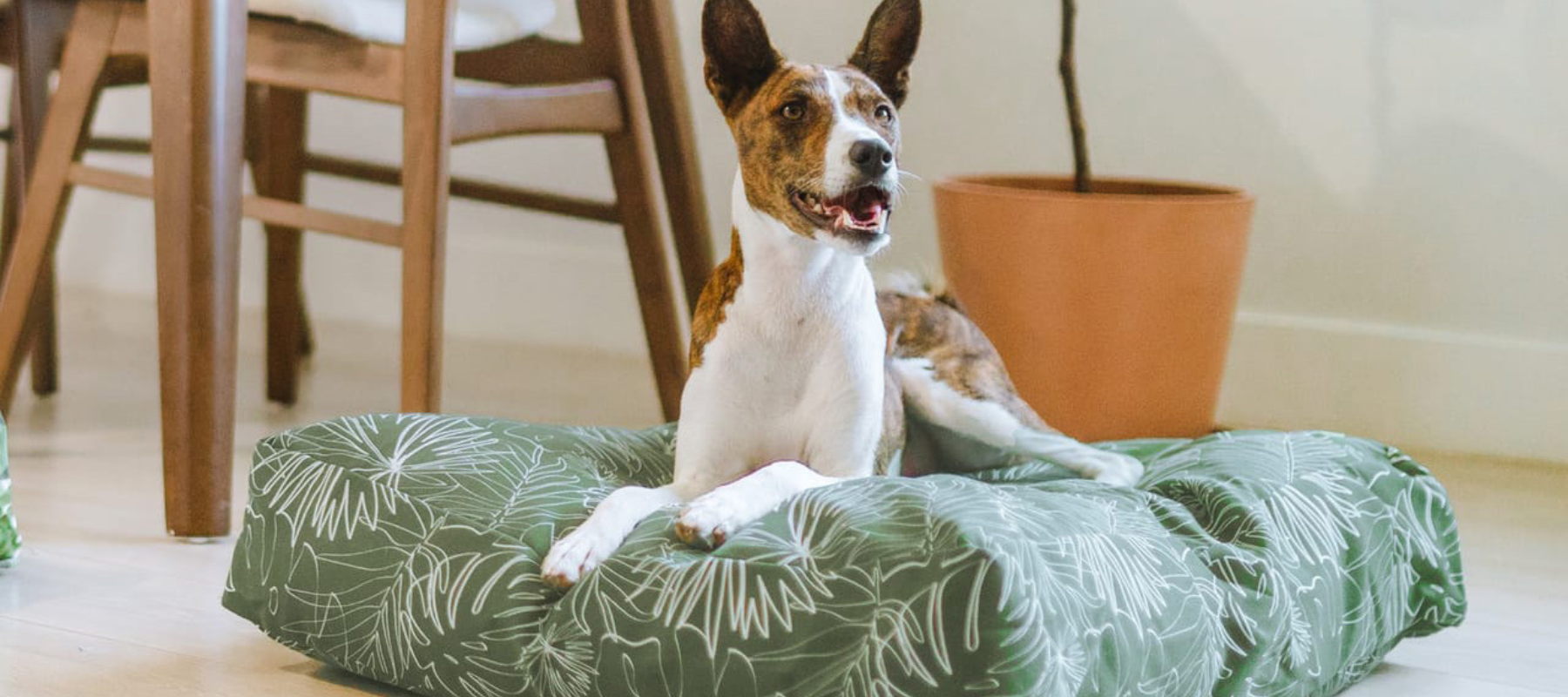Something we’ve discovered on our journey towards creating a kinder, cleaner planet is that practicing pet sustainability is all about making little changes along the way.
As much as we love our furry friends, pet waste, food, treats, toys and accessories can all have disastrous effects on our planet.
But a bowl is just a bowl, right? Wrong. Not only are some bowls bad for our planet, they can also be harmful for your pup or kitty. So material definitely matters.
This post is all about reducing your and your pet’s carbon footprint by making the switch to more eco friendly cat bowls and dog bowls.
Read on to discover the materials to look out for when purchasing the greener alternative.
Say No to Plastic
It should come to no surprise that plastic is obviously terrible for the environment. Produced from chemicals, plastic contributes to global warming, kills ocean life and other wildlife, and survives even the harshest conditions which means it isn’t going anywhere fast.
Unfortunately, when it comes to pet bowls made in the USA, plastic bowls are often a popular choice for pet owners because they are cheap and usually come in a variety of styles and colors.
We know plastic is harmful for the environment but are plastic bowls bad for cats and are plastic bowls bad for dogs?
Actually, yes.
Plastic bowls can be harmful for your beloved pet for the following reasons:
- Plastic is prone to scratches over time, plastic bowls register the highest levels of bacteria as the nooks and crannies are the perfect breeding ground.
- They can contain harmful chemicals like Bisphenol A, BPA, phthalates, and p-benzyl hydroquinone. These chemicals are known to cause cancer, impair brain function, and cause diabetes. Sadly, many pets that eat from plastic bowls develop chin acne and irritation.
What about Bamboo Bowls?
Compared to plastic, bamboo is a better choice for many reasons, but there are drawbacks to consider. Some of the advantages bamboo dog bowls have over plastic bowls are:
- They don’t collect bacteria or leach into your pet’s food. Bamboo cat bowls are also biodegradable which is a win for our planet.
- Like plastic, bamboo bowls are strong and durable but instead of containing harsh chemicals, they are made with renewable resources using 100% natural products.
Possibly negatives to consider:
- Like with plastic, once the bowls are scratched, they can harbor bacteria.
- Not all bamboo products are made with environmentally friendly materials and can contain toxic fillers that aren't healthy may not biodegrade over time.
Are Ceramic Bowls Good for Pets?
Like bamboo, ceramic bowls are an eco-friendly dog bowl alternative to plastic. Handmade in the USA, they offer a stylish and sustainable choice for your cat or dog. While they are dishwasher safe and microwave safe, be sure to keep an eye out for scratches, as they can harbor bacteria.
Are Stainless Dog Bowls Safe?
If we’re comparing dog bowls ceramic vs. stainless steel, stainless steel dog bowls are the clear winner for many reasons:
- They are the leader in durability. Stainless steel bowls will last the life of your pet and generations of pets to come.
- Stainless bowls are easy to clean. Just toss them in the dishwasher. This usually cannot be done with plastic and bamboo.
- At the end of life, they can be recycled as stainless is one of the easiest materials to recycle.
One thing to watch out for, however, is biofilm. This filmy collection of organisms can grow on stainless steel bowls if they are not regularly washed. The good news (which we mentioned before) is that stainless steel bowls are dishwasher friendly so they are easy to keep clean. Also verify the bowls are from a safe source and are free of lead, usually labeled as non toxic, human grade or food safe.
This Stainless Steel Bowl is a great choice for small dogs. It works great for holding dry kibble, wet food, treats, and water, plus it’s non-toxic, human grade, and dishwasher safe.
Stainless Steel Bowls for Cats
Just like for dogs, stainless steel bowls are also a great choice for our feline friends.
Our Stainless Steel Cat Bowl on Stand is perfect for a kitty (or small doggo!) who enjoys eating from a raised bowl. The material is heavy enough to prevent tips or slips and it’s 100% dishwasher safe.

One thing we want to point out is that when feeding your cat, it’s important to watch out for whisker fatigue. Although they look cute, cat whiskers actually have a bigger purpose, serving as high-powered antennae that pull signals into their brain and nervous system.
This means that whenever whisker hairs come into contact with an object or detect movement, messages are sent from the sensory organs at the base of your cat’s whiskers to the brain. This can cause information overload and stress out your kitty!
Whisker fatigue is something I actually experienced with Charlotte myself. I was feeding her out of a deep dish ceramic bowl and noticed that she wasn’t eating as much as she should have. I had heard about whisker fatigue before, but didn't give it much thought when I first purchased her bowls.
The good news is that when I switched to using shallow bowls and plates, Charlotte’s appetite returned! We now only use shallow plates for her food and shallow bowls for her water.
If you suspect your cat is experiencing whisker fatigue, switch to a flat surface or wide-enough bowl so that your cat’s whiskers don’t touch the side of the bowl.
Eco-Friendly Comfort for your Pet's Dining Area
If you're looking to enhance your pet's dining area, this Placemat for Dogs in Absorbent Wool is a great choice because it protects your floors while providing a comfortable space for your furry friend. Unlike plastic mats, which can create more mess without soaking up any liquids, this wool placemat effectively absorbs spills, making it our favorite water-absorbent dog feeding mat. Its sustainable design not only protects your floors but also enhances your pet's dining experience with a touch of natural elegance to your home.
How to Clean your Pet Bowl
As I mentioned, bacteria can build up in your pet’s bowl making it very important to clean it properly and regularly.
The best way to clean your pet bowl is using a dishwasher on the hottest setting. We recommend removing and cleaning your pet’s bowl daily. If you wash by hand, use the hottest water possible and make sure you use a separate sponge to avoid bacterial contamination with your human dishes.
An eco-friendly option is to actually sanitize your pet bowl using equal parts white vinegar and water. Alternatively, you can combine equal parts baking soda, warm water and salt to scrub your bowl with a sponge.
https://www.petmd.com/care/whisker-fatigue-cats-what-it-and-how-help








